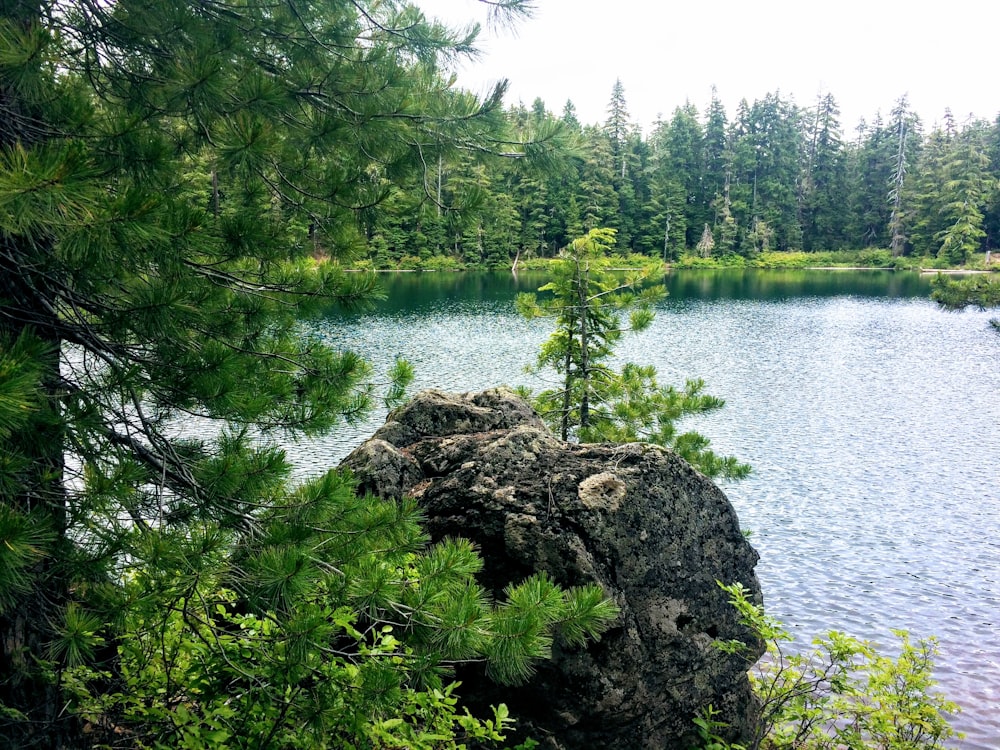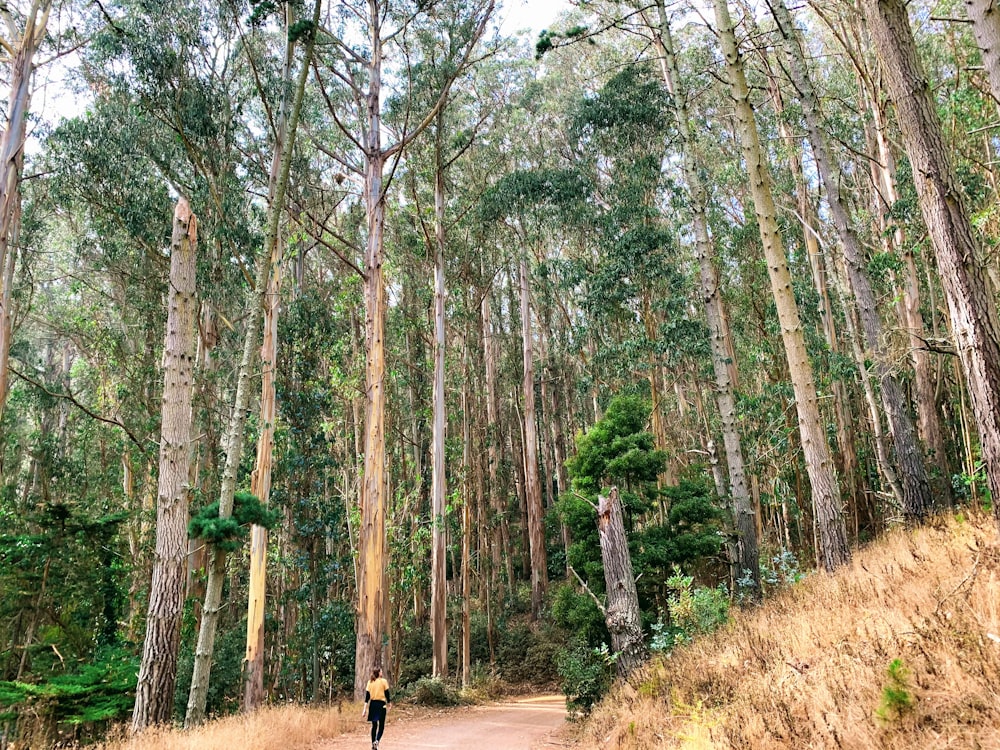
Mt. Hood National Forest. Photo by Sarah Ardin- Unsplash
10 Most beautiful Forests in the US
More than one-third of the United States is made up of woodlands or forest regions, totalling approximately 822 million acres—and we depend on them more than you might think. Forests provide drinking water to over 200 million Americans.
Forests themselves contribute to the cleanliness of drinking water by reducing soil erosion and filtering harsh chemicals and sediments.
They lessen the chances during natural disasters (landslides, flooding), as well as the amount of carbon dioxide in the atmosphere, thereby mitigating the environmental effects of climate change. In short, they are critical to our survival (and the survival of the planet).
A comprehensive list of the most important forests in the United States would include every single forest—these are just a few of the most beautiful. They were ranked in order of importance to me, based on…well, nothing really-personal preference. Here are a few of the most beautiful forests in the United States.
1. Tongass National Forest (Alaska)
Tongass National Forest, at 16.5 million acres, is larger than the entire state of North Carolina. Whereas the forest is famous for its vast swaths of Sitka spruce, western hemlock, and cedar, it is also geologically and climatically diverse enough to support magnificent glaciers and icefields.
The trees themselves are truly amazing for their size and longevity, with some dating back up to 800 years. More than one-third of Tongass National Forest is identified as national forest, providing habitat for a wide range of wildlife species such as brown and black bears, mountain goats, black-tailed deer, wolverines, river otters, harbour seals, and bald eagles.
In addition, scenes from the 1982 horror/sci-fi film The Thing were shot here.
Unfortunately, Tongass National Forest is one of America’s most exploited forests, as evidenced by centuries of deforestation clear and obvious scars. Some of its wildest stretches of forest, known as “invented roadless areas,” are currently at risk, which could lead to significant risks for natural forests across the county.
Address: Juneau, AK 99801, United States
2. Gifford Pinchot National Forest (Washington)
Gifford Pinchot National Forest, outlined by the Mount St. Helens National Volcanic Monument, is known for its extraordinary scenery, which includes tunnels and caverns created in eons-old cooling lava.
The 2.5-mile-long Ape Cave is a popular tourist attraction, and the forest is a great hiking location thanks to a section of the Pacific Crest Trail.
The several rivers, lakes, and streams of the Gifford Pinchot National Forest are home to a variety of fish, including chinook salmon, coho salmon, steelhead trout, cutthroat trout, and rainbow trout.
Elk, black bears, mountain goats, and bobcats are examples of terrestrial species.
Address: Packwood, WA 98361, United States
3. Coconino National Forest (Arizona)
When you think of Arizona, images of saguaro cacti and desert may come to mind. And when you hear the phrase “national forest,” you might imagine miles of evergreen-covered mountains.
Coconino National Forest flouts both anticipations, with landscapes ranging from dramatic red rock formations to alpine tundra. Elk, javelinas, black bears, rattlesnakes, and other wildlife can be found in the area.
Unsurprisingly, hiking, horseback riding, fishing, and camping are all popular activities in Coconino National Forest.
Elden Pueblo, an important archaeological site atop the remains of an ancient Sinagua village, is another unique feature of Coconino National Forest. Objects discovered at Elden Pueblo are thought to have come from as far away as Mexico and California, indicating the presence of a massive trade outpost near the area.
Address: Lake Mary Rd, Flagstaff, AZ 86001, United States
4. Pisgah and Nantahala National Forests (North Carolina)

A view of a water body surrounded by greenery. Photo by Bryn Gibson- Unsplash
The western North Carolina national forests of Pisgah and Nantahala may be best known for their spectacular fall foliage exhibits. Every year, the two forests, which cover approximately one million acres, cover the Blue Ridge Mountains in reds, yellows, and oranges.
Even in the off-season, the old-growth stretches of oak, hemlock, tulip poplar, pine, sycamore, dogwood, and beech entice visitors looking for hiking, fishing, and other outdoor activities (together, the Pisgah and Nantahala contain over 200 miles of the Appalachian Trail).
Six wilderness areas between the two forests attest to the fact that there is still some fairly untouched land on the east coast. All through the area, black bears, deer, wild boar, and other wildlife can be found.
Address: Bryson City, NC 28713, United States
5. White Mountain National Forest (New Hampshire)
White Mountain National Forest, which spans more than 800,000 acres, contains some of the most untamed and beautiful country in the Northeast, including the Presidential Mountain Range.
The 6,288-foot Mount Washington, a struggle for fearless hikers that has long appeared the “world’s worst weather,” is debatably the area’s main attraction (indeed, wind speeds in excess of 200 mph have been recorded here, and as much as four feet of snow has fallen in a single 24-hour period).
Exposure to extreme weather, the White Mountain National Forest has a lush wooded scenery; maple, oak, hemlock, pine, and birch predominate at lower elevations, with spruce and fir taking over as you climb higher. Moose, black bears, and peregrine falcons are among the wildlife highlights in the region.
Address: 71 White Mountain Dr, Campton, NH 03223, United States
6. Bridger-Teton National Forest (Wyoming)
The massive Bridger-Teton National Forest, which is part of the Greater Yellowstone Ecosystem and is regarded one of the greatest nearly intact temperate-zone ecosystems on the planet, includes an unbelievable 1.2 million acres of legally protected wilderness crossing the Continental Divide.
This magnificent landscape is dotted with glaciers, lush alpine meadows, limestone peaks, and hundreds of miles of rivers and streams that form the Wild and Scenic Snake River Headwaters.
The Gros Ventre Slide Geologic Area is the forest’s main geological attraction, a long, rubble-strewn scar left by an infamous 1925 landslide that blocked the Gros Ventre River and created the five-mile-long Lower Slide Lake.
The woodlands of the Bridger-Teton National Forest range from aspen, Douglas fir, and lodgepole pine at lower altitudes to spruce-fir and whitebark pine in the higher altitudes.
Tourists may see moose, bighorn sheep, grizzly bears, elk, bobcats, pikas, and bald eagles seasonally.
Address: Wyoming, United States
7. Superior National Forest (Minnesota)

A yellow bird on the fence. Photo by Kevin Cress -Unsplash
You might not think of the upper Midwest as a wilderness hotspot, but Superior National Forest is one of the most popular stretches of public land in the country, a popular destination for kayaking, canoeing, hiking, fishing, and skiing.
The Boundary Waters Canoe Area Wilderness, carved by ancient glaciers along the Canadian border, is a 1 million-acre paradise of rugged cliffs and crags, gentle hills, canyon walls, rocky shores and sandy beaches, and lakes of all sizes.
This deep green refuge is typified by stands of pine, fir, and spruce. Unfortunately, the watershed of the wilderness area is threatened by nearby mining, which could release sulfuric acid, sulfates and heavy metals (some of which are highly toxic) into the water, harming fish and wildlife.
Superior National Forest is home to some truly unique wildlife, such as gray wolves (Northern Minnesota is one of the species’ last strongholds in the continental United States), moose, lynx, and black bear. It is also a famous birding location, with hundreds of species recorded.
Address: 8901 Grand Ave Pl, Duluth, MN 55808, United States
8. White River National Forest (Colorado)
The White River National Forest has eight wilderness areas, including the beautiful Maroon Bells-Snowmass Wilderness, and ten mountain peaks higher than 14,000 feet.
All of this makes it a popular destination for mountain climbers, photographers, campers, skiers, and other outdoor enthusiasts. Furthermore, it was here that U.S. Forest Service official Arthur Carhart is said to have first proposed the concept of federally mandated wilderness.
In the summer, Blue lupines and Colorado columbines contrast with yellow heartleaf arnica and tall groundsel, making White River National Forest a popular spot for wildflower viewing. Yearly, the nearby town of Crested Butte hosts wildflower festival events.
9. Sierra National Forest (California)

A girl taking a hike on the path in the forest. Photo by Yaroslav Muzychenko- Unsplash
Sierra National Forest is frequently overlooked because it is enclosed by much larger and more famous forests (such as Yosemite and Sequoia National Parks), but that doesn’t make it any less special. Tall mountain peaks tower over subalpine meadow areas and beautiful, shimmering lakes. The forest is ideal for hikers, with many pristine hiking trails—both the John Muir and Pacific Crest trails run right through it.
Address: California 91024, United States
10. Dixie National Forest (Utah)
Dixie National Forest, which stretches for about 170 miles in southern Utah, is naturally beautiful. It also has some amazing names, such as Death Hollow (a very spectacular canyon and wilderness area made up of vertical grey orange sandstone walls) and Hell’s Backbone Road, a rugged 38-mile road connecting the towns of Boulder and Escalante, with a bridge of the same name (Hell’s Backbone Bridge) on both sides. Boulder Mountain, which includes lots of small lakes and chances for hiking, fishing, and other forest-related activities, is also located in Dixie National Forest.
Address: 820 N Main St, Cedar City, UT 84721, United States
Planning a trip to Paris ? Get ready !
These are Amazon’s best-selling travel products that you may need for coming to Paris.
Bookstore
- The best travel book : Rick Steves – Paris 2023 – Learn more here
- Fodor’s Paris 2024 – Learn more here
Travel Gear
- Venture Pal Lightweight Backpack – Learn more here
- Samsonite Winfield 2 28″ Luggage – Learn more here
- Swig Savvy’s Stainless Steel Insulated Water Bottle – Learn more here
Check Amazon’s best-seller list for the most popular travel accessories. We sometimes read this list just to find out what new travel products people are buying.










